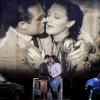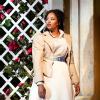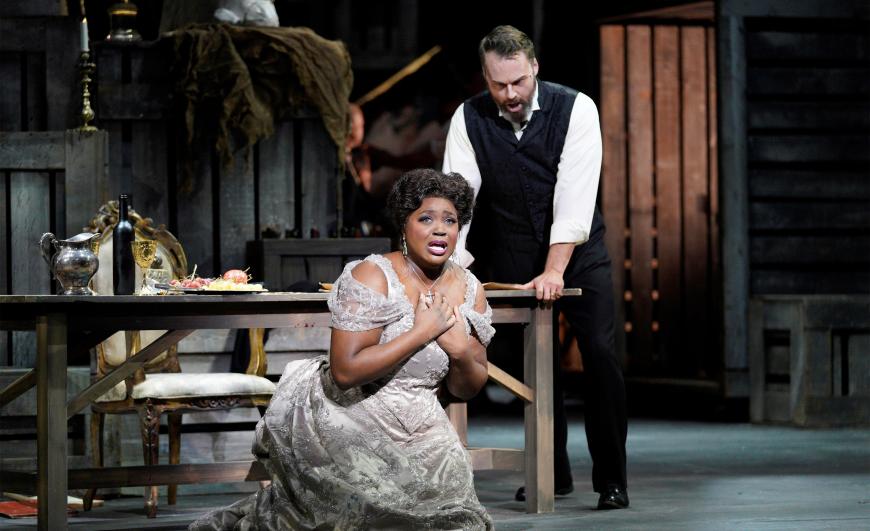
There is a big difference between deconstructing an opera and demolishing it. Los Angeles Opera opened its season with a revolutionary staging of Gaetano Donizetti’s Lucia di Lammermoor (in collaboration with the Metropolitan Opera) that was dramatically riveting and a technical tour de force that deconstructed the opera by transporting Walter Scott’s Scotland to the mean streets of Rust Belt America. In contrast, Saturday’s second resurrection of the company’s 2013 Tosca is so shabby and intentionally ugly you might think its creators hated the opera.
It's certainly not imperative that every production of Tosca painstakingly reproduce the Renaissance splendor of the Basilica de Sant’Andrea della Valle, the gilded opulence of the Palazzo Farnese, or the ominous architecture of the Castel Sant’Angelo. It is, however, critical to show how opulence can shield depravity, decadence, and the misuse of power, especially when that depravity is set against the power of love, political idealism, and the flamboyant temperament of Rome’s diva extraordinaire, Floria Tosca.
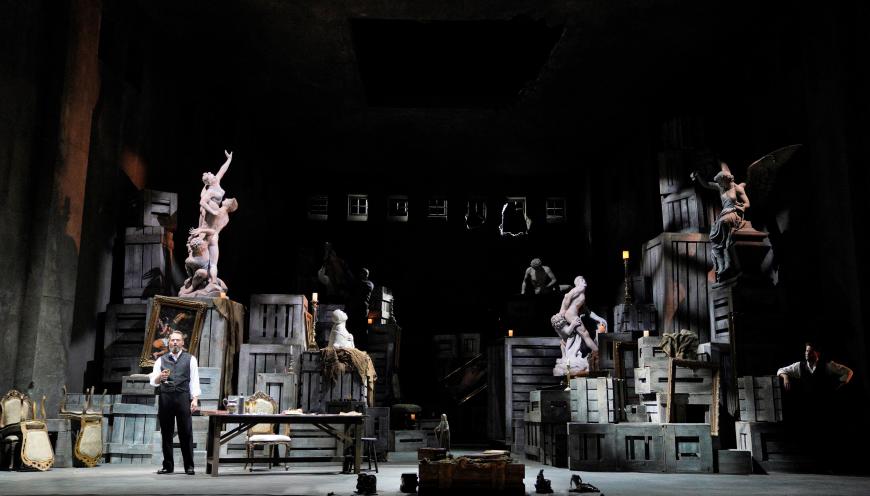
Updated from the opera’s Napoleonic setting to pre-fascist Italy, the production ensures elegance does not exist. This is a gray world where brute force is all that matters and the glory that was Rome has been totally stripped away. In Bunny Christie’s designs, the church in Act 1 is reduced to a shabby storage closet of a setting filled with displaced furniture and statuary. It is certainly not an elevated place of worship. The regal palace apartments in Act 2 are inexplicably depicted as a vast warehouse piled from floor to ceiling with crates of pillaged sculpture and paintings. The prison in Act 3 looks like something out a horror painting by Goya, where convicts cower and rotting corpses hang from the rafters.
It all might have seemed less offensive and distracting if John Caird’s direction had been more adept at providing insight and nuance while igniting the inherent volatility of the drama.
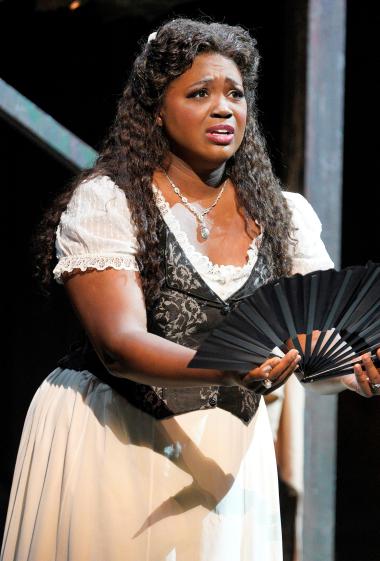
Much of the attention Saturday was focused directly on soprano Angel Joy Blue, making her LA Opera debut as Tosca. A graduate of the Domingo-Colburn-Stein Young Artist Program and the opera department at UCLA, she is unquestionably a star, having, among other things, been the first Black singer to play Violetta Valéry at La Scala, in a production of La traviata in 2019.
Blue has a voice that is large, flexible, robust, and buttery. She certainly does not possess the type of spinto edge many other sopranos have used to full advantage when portraying Tosca, most notably Maria Callas.
From the moment Blue made her first entrance (dressed in a totally inappropriate costume that made her look like a peasant girl from the country), it was clear she was going to have a difficult time embodying the formidable diva, and Caird’s direction offered little guidance beyond efficient traffic management and bold-strokes motivation. Where was the flamboyance, the flair, elegance, and lightning volatility?
Vocally, Blue’s Tosca, Michael Fabiano’s Cavaradossi, and Ryan McKinny’s Scarpia are well matched. Each has a powerful (if not always subtly shaded) voice. And despite the production’s overpowering visualization, the brilliance of Puccini’s score, as conducted by Louis Lohraseb, does consistently blaze through.
The climactic dance of death between Blue and McKinny was volatile, more rape than seduction, highlighted by Blue’s impassioned rendition of “Vissi d’arte.” Fabiano (costumed like he’d done his shopping at the Gap) started slowly but reached his vocal peaks during his Act 2 interrogation and his Act 3 rendition of “E lucevan le stelle” and subsequent soaring duet with Blue.
The secondary roles were sung well: Wei Wu as the escaped prisoner, Angelotti; Philip Corkorinos as the resentful Sacristan; and Anthony León and Zachary James as Scarpia’s henchmen, Spoletta and Sciarrone.
Tosca is a staple of every opera company. It’s time to retire this ghastly creation and find a new one. Maybe one that wants to portray the glory and the gory that was Rome.


